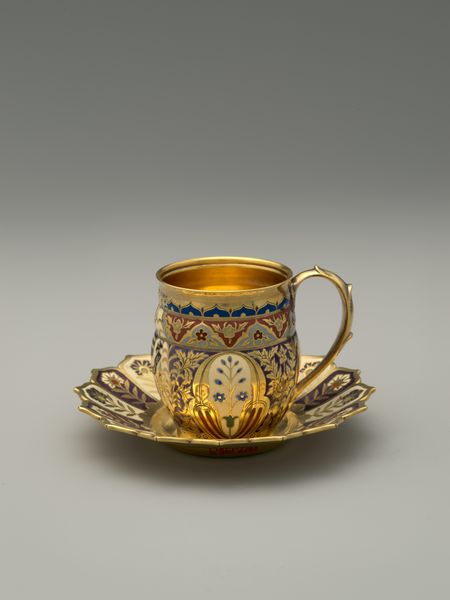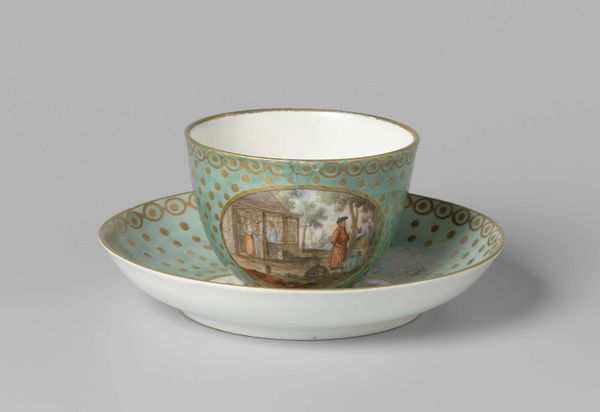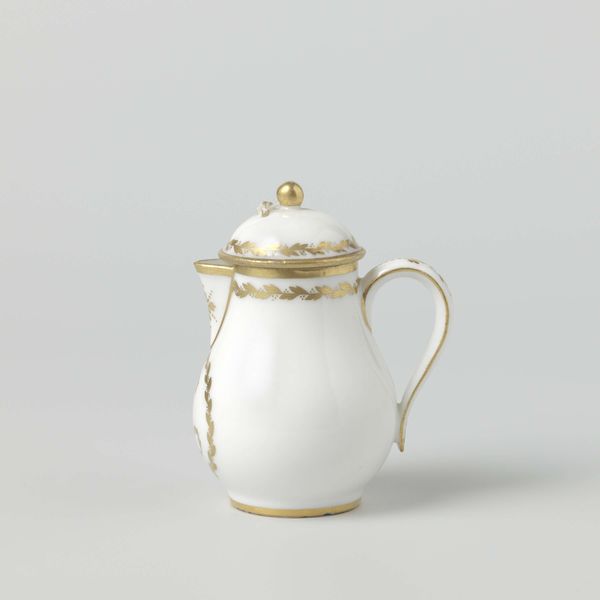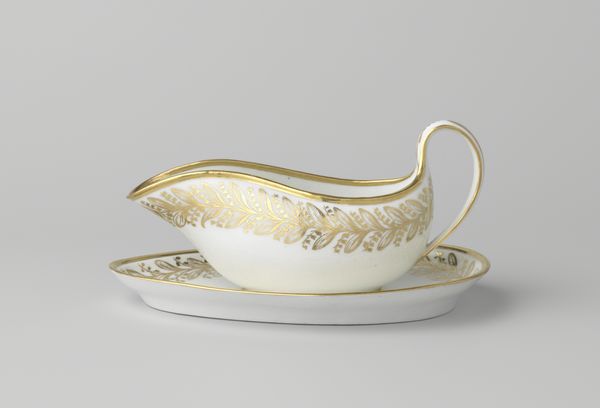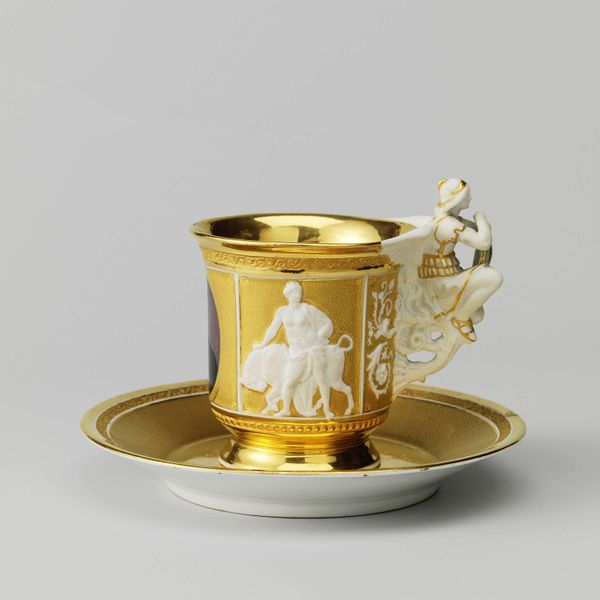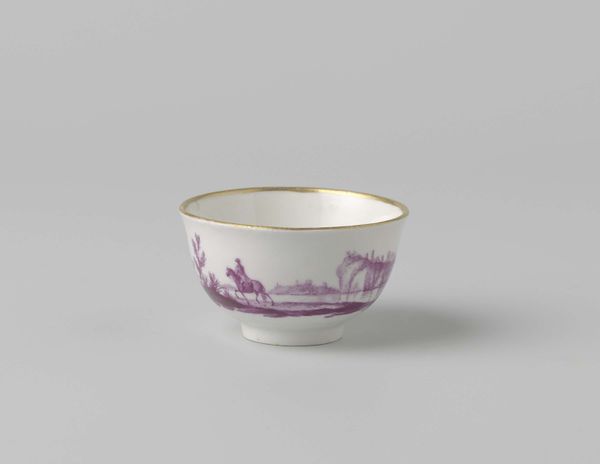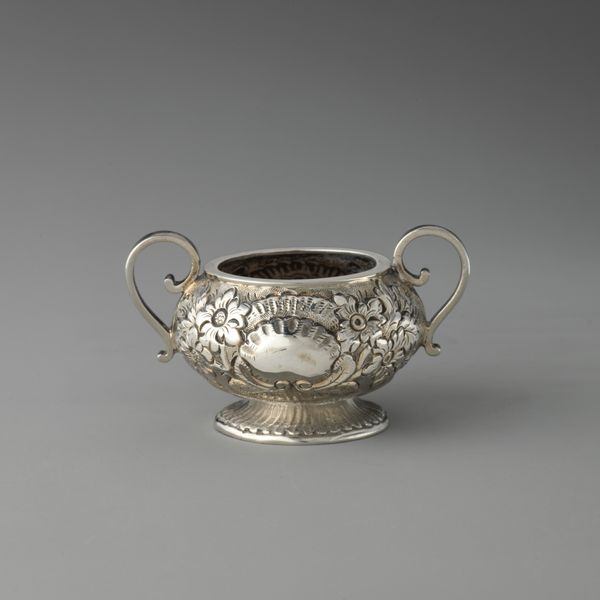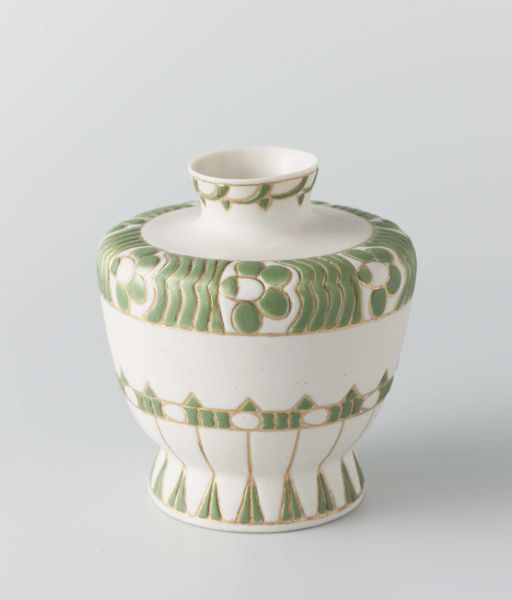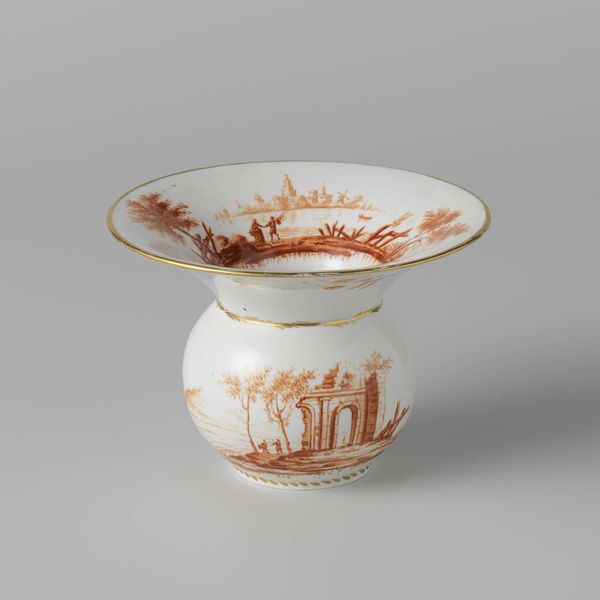
painting
#
painting
#
landscape
#
genre-painting
#
realism
Dimensions: height 7.7 cm, width 11.6 cm, diameter 9.8 cm
Copyright: Rijks Museum: Open Domain
Curator: The “Kop beschilderd in sepia,” or “Cup painted in Sepia,” crafted in 1879 by Eduard Alexander Hilverdink, presents a captivating instance of genre-painting realized through the refined artistry of painting. Editor: There is something quite striking about this object; the warm sepia tones create a wistful, almost dreamlike ambiance across this piece. It is unusual to encounter this on porcelain. Curator: It certainly invites discussion on medium and artistry. What are your initial thoughts on the confluence of art, material and the socioeconomic implications of art's chosen form here? Hilverdink here renders this small scene, seemingly pulled directly from Dutch rural life. We might question his motivations and his consumer market here? Editor: Right! Genre painting became increasingly popular amongst the Dutch middle class seeking to assert and solidify their values. What strikes me is how the very act of transferring this onto a common item—a tea cup—potentially alters its function. Curator: Indeed, everyday utilitarian items served as vehicles for these small intimate and picturesque representations, transforming common, available and accessible objects. We could consider this art democratization of a sort, made purchasable, owned, handled and employed in daily practice? This contrasts sharply with works displayed in formal galleries or homes of the aristocratic patrons. Editor: Interesting! We can note too, this painting on porcelain might have circulated among women. Consumption of goods like tea was an intimate performance, tied closely to the burgeoning middle-class Dutch Republic— and painting could easily be tied into expressions of status. The political implications behind seemingly apolitical artworks must be accounted for too, I believe. Curator: Agreed. Through the sepia technique, the artist offers us a scene that both captures the essence of its time and prompts consideration regarding material culture. It’s a dialogue between fine art traditions and practical utility. Editor: Yes, precisely. A window onto Hilverdink’s world, yet held within the curve of a delicate cup and saucer. What a compelling thought.
Comments
No comments
Be the first to comment and join the conversation on the ultimate creative platform.


